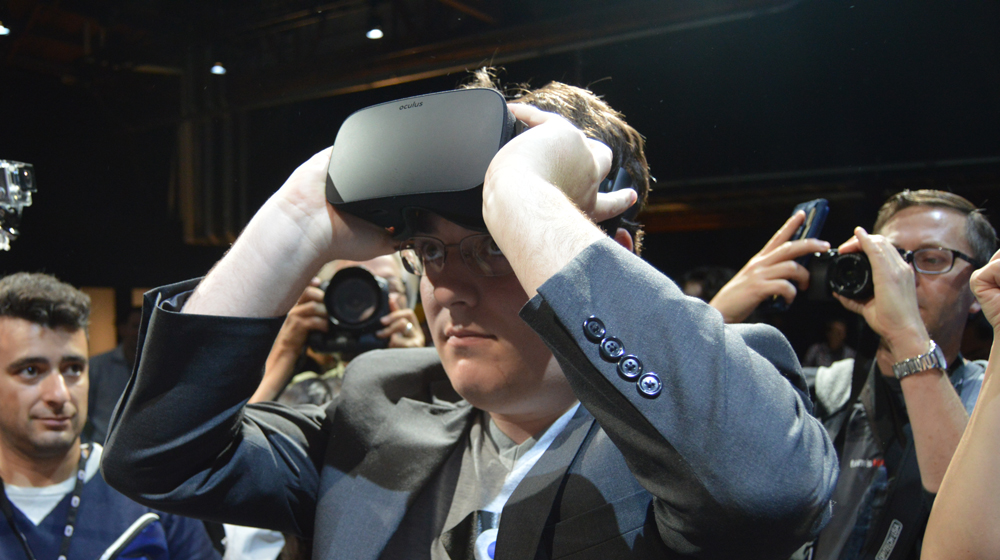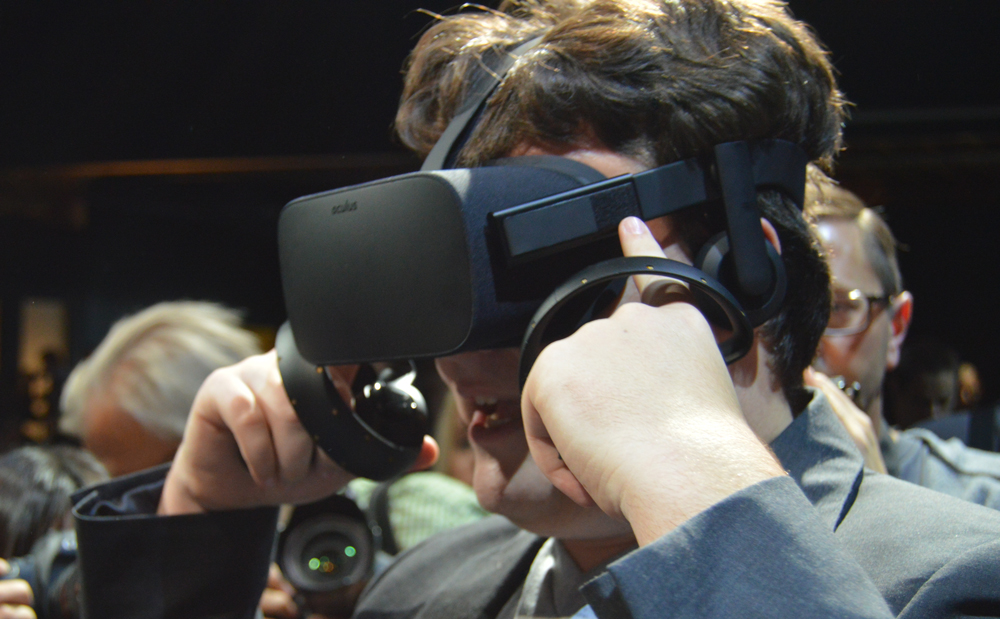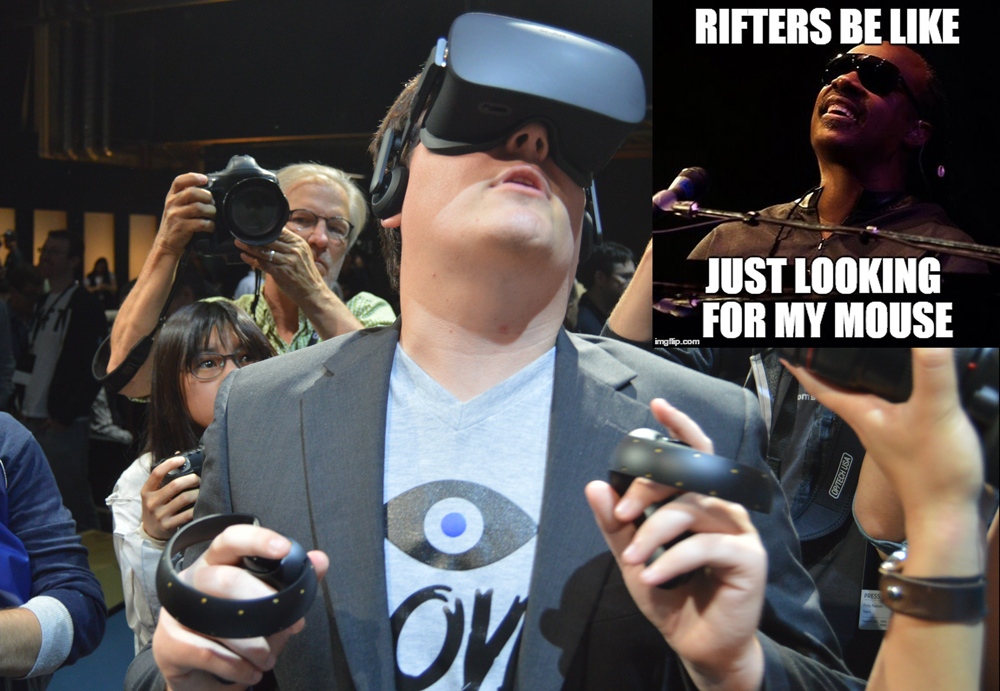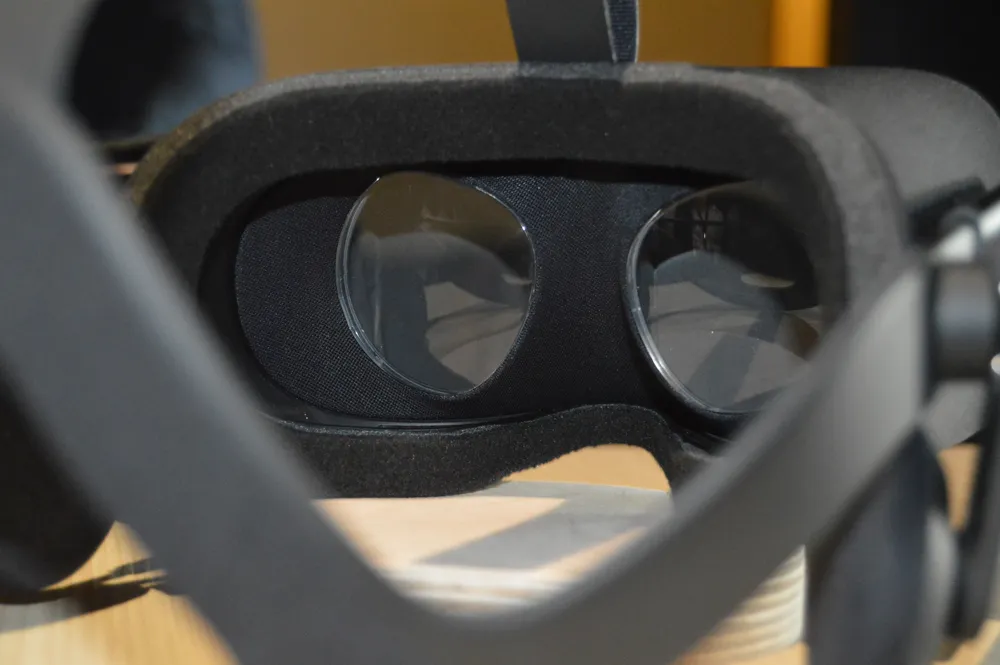When Oculus revealed the consumer version of it’s headset earlier this week all of the talk seemed to focus on two things – the input and the partnership with Microsoft. Both of these were obviously big news, but the thing that Palmer was most excited to talk about after the show wasn’t either of those things, it was the ergonomics.
One of the things that Oculus has obviously spent a lot of time on is refining the Rift’s form factor, trying to make it as comfortable experience as possible, because without it being comfortable nobody is going to wear it. “We did a lot of ergonomics research,” says Palmer Luckey, Oculus’ co-founder, “How to make the best device, how to fit everybody’s face. Turns out we’re all too different to just use one facial interface.”
Which is why when the Rift ships in Q1 2016, “it will ship with multiple facial interfaces.” These interfaces will take the form of differently shaped faceplates on the interior of the device. These will allow for people with different facial structures and features to more easily and comfortably fit in the Rift. It will also allow for anyone with glasses to use the device as well.

On stage, Brendan Iribe – Oculus’ CEO, mentioned that glasses users would be able to wear the Rift comfortably without removing their glasses. However, after the show – Palmer, who had worn glasses on stage for the event, took off his glasses to put the Rift on. Some people wondered what was up with that, but it turns out the device on stage simply wasn’t fit with the glasses interface. Palmer later confirmed this to a crowd of reporters saying “We have a [facial interface] that’s designed for glasses user that provides a little more eye relief in the most comfortable way possible.”
This news isn’t just good for those with glasses, it’s good for a lot of people. One of the complaints I consistently hear from my girlfriend about VR is how the lenses always press against her mascara on her long eyelashes – a problem that I am certain she is not unique in having. By allowing for swappable interfaces it makes it possible to have a “makeup sensitive” facial interface – perhaps even one that won’t rub as much makeup off your face like you might assume a cloth based headset would.
The facial interfaces weren’t the only improvements – there are a lot more subtleties to the ergonomic and functional design of the headset.
One of the issues that has plagued the development kits of the Oculus Rift are lenses fogging up during play – causing the player to break immersion to clean off the lenses. This also led to problems with many lenses getting scratched – as presumably not every developer kit owner would keep a microfiber cloth on hand to wipe off the lens. But according to Palmer, “the lenses [on the consumer Rift] don’t fog up.” How they have achieved this remains a mystery – as there is no fan in the headset, like there is on the Gear VR 2 (which was installed to fix this same issue).

There has also been a significant redesign to the strap system. Gone are the elastic straps adorned by the previous development kits that immediately imbued the image of ski goggles, in their stead are a set of “semi rigid straps” that use a spring loaded system to maintain adjustment. Palmer showed us how this worked, “The first time you put it on, you have to get the straps adjusted right, but after that it’s as simple as just,” he puts the rift on like a baseball cap, “that’s all you need to do. so the cool thing is, because you have these mechanical springs in here, you actually are able to adjust the tension as well as where you put it on your face.”
This is a departure from the Crescent Bay pull and velcro based adjustment system that I had actually grown quite fond of. This new system, however, seems to allow for a quicker in and out experience on the Rift. But I guess we will just have to wait for next week to see for ourselves.
One Last Thing:
Experienced Rifters know that the nose gaps can be useful for looking at the keyboard, mouse, drink, etc. We made sure to ask if we would still be able to utilize that ‘feature’ in the consumer Rift – we got a pretty good answer.































